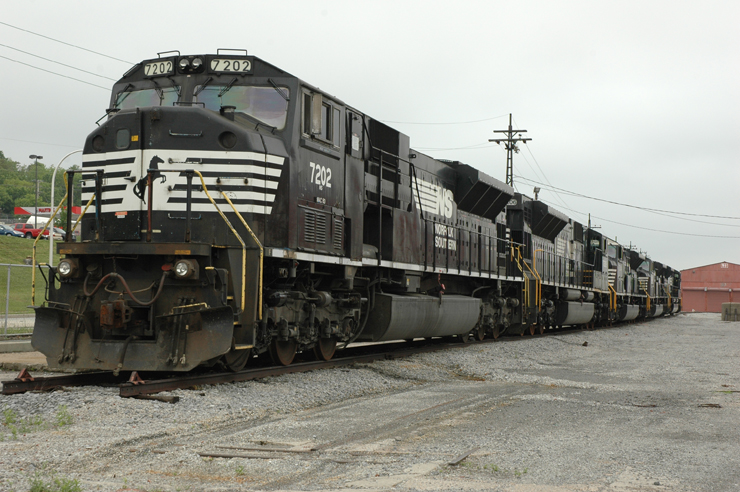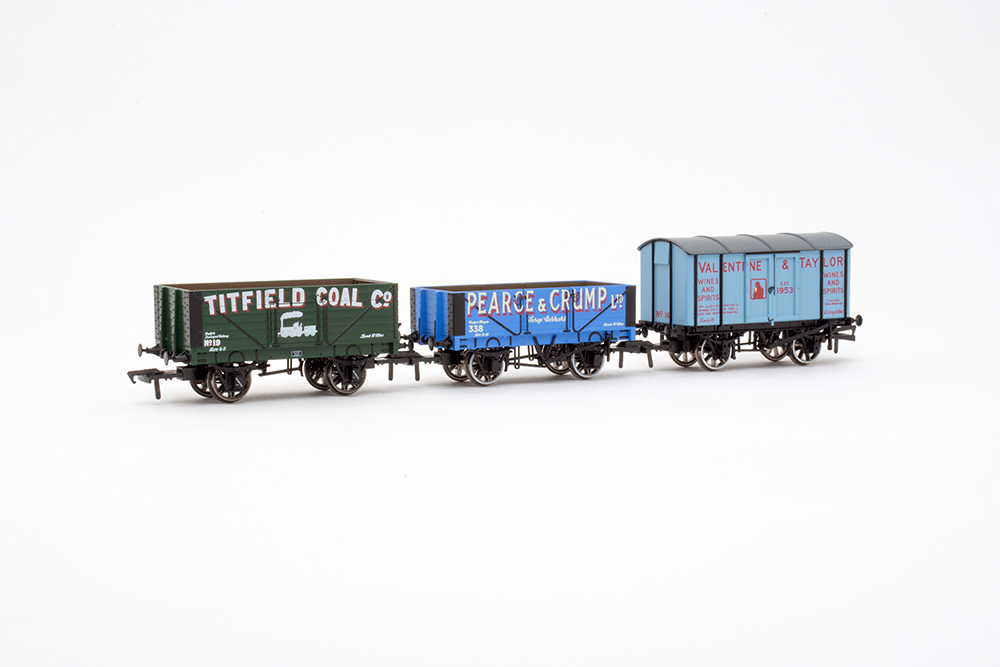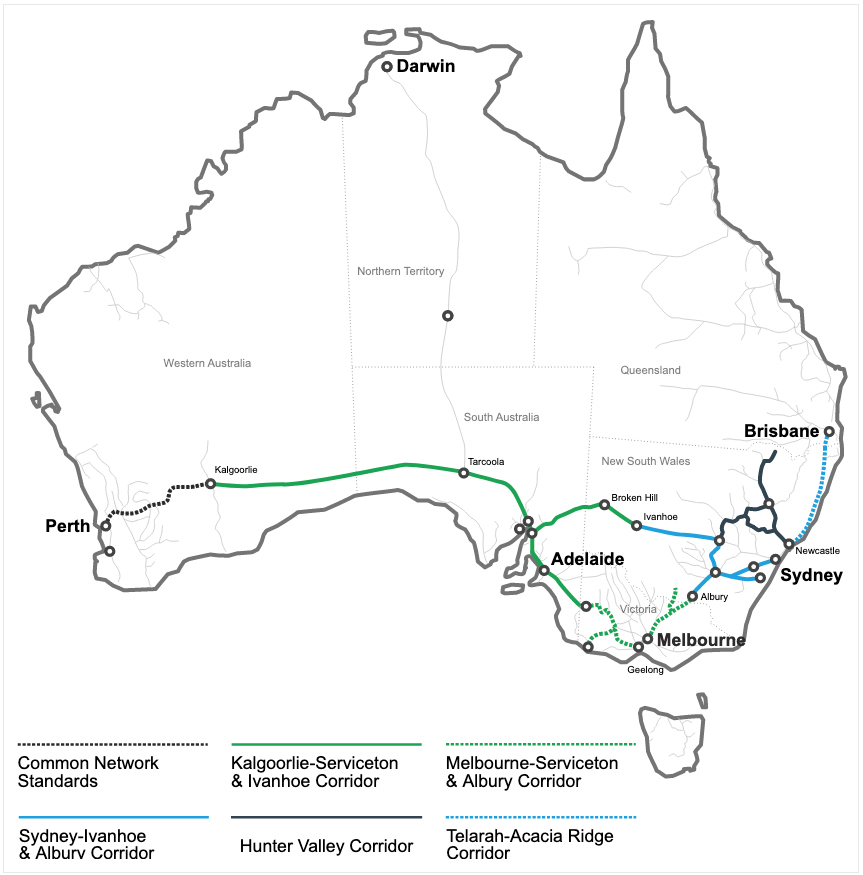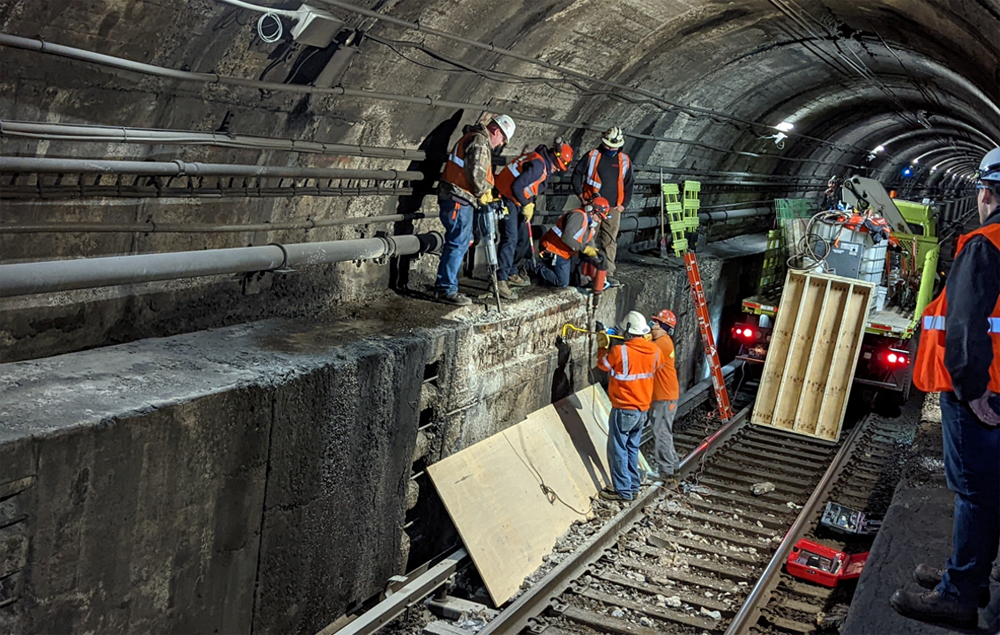Following its recent auction of locomotives, including its four Executive F units, Norfolk Southern is continuing to pare its fleet of units that are oddballs, old, or both.
The latest group of locomotives for sale includes the 29-unit, unique-to-Conrail fleet of Electro-Motive Division SD80MACs, carrying NS Nos. 7200-7228. Built in 1995-1996, they were part of Conrail’s small venture into alternating-current-powered locomotives, along with 15 SD70MACs. Listed at 5,000 hp, they are also NS’s most powerful single units. Thirteen of the locomotives went to CSX Transportation in the 1999 split of Conrail; one was scrapped after a 2009 mishap, but the remaining 12 were later acquired by NS, reuniting the SD80MAC fleet under one ownership.
During Conrail years and initially under NS, the 80MACs worked in coal service around South Fork, Cresson, and Altoona, Pa. Later, they operated in more widespread assignments. In implementing its own version of Precision Scheduled Railroading, NS has parked the units, so it is little surprise that they are on the sale list.
Also up for sale are RPU6 Slug 879 (a former EMD SD40) and RP-E4 Slugs 912 and 913 (former Norfolk & Western GP9s); MP15E’s 2368 (ex-Southern/Central of Georgia), 2374, and 2381 (both ex-Southern); GP38-2s 5202 (ex-Southern) and 5276 (ex-Penn Central); and GP40-2 3030 (ex-Conrail).
The largest group is a batch of 58 EMD SD40-2s. Among them are units of the following origins: Alabama Great Southern (Southern subsidiary; 1 unit); Burlington Northern (16 units), Canadian Pacific (two units), Central of Georgia (Southern subsidiary, five units), Cincinnati New Orleans & Texas Pacific (Southern subsidiary, two units), Colorado & Southern (BN subsidiary, one unit), Conrail (11 units), Georgia Southern & Florida (Southern subsidiary, one unit), Kennecott Copper Co. (one unit), Missouri Pacific (one unit), Norfolk & Western (nine units), and Union Pacific (two units).
Among the SD40-2s are a few that are 45 years old. Some were owned continuously by NS and predecessors, while others were acquired through locomotive lease firms CEFX, CITX, or FURX. Some were rebuilt with “Admiral cabs” by NS’s Juniata Locomotive Shop in Altoona, Pa.
— Updated to note disposition of one CSX SD80MAC and additional Conrail AC locomotives.















Another draw back on the 80MACs is that they use non-stanard 45 inch diameter wheel sets over the standard 42 inch wheel sets on other ACs. Too much trouble to maintain a separate inventory of 45 inch sets for such a limited number of units.
I have heard on good authority that the engineers strongly dislike the 70’s, AC or DC. Note how much smaller the CAT conversion program is compared to the GE’s.
There’s no sign of the SD70ACC program continuing and they just put up for sale all of their remaining SD70’s except for three.
They of course could utilize their closely related fleet of SD70M’s (And their small number of 2nd hand SD75M’s) as cores, but it seems unlikely when they’re about to eliminate via sale the specific model that they had been utilizing for the program.
I suspect it’s what I said. The planned numbers of Dash 9 to AC44C6M conversions is likely viewed as adequate to meeting their needs and these unrebuilt EMD’s are simply surplus to their needs rather than viewed as too problematic to deal with.
And even that program isn’t a guarantee. Plans can change despite announced intentions. Rebuilding that many locomotives doesn’t gel with PSR’s scorched earth policies, job reductions are so great at Roanoke that they were already unable to even fulfill 2019’s planned order and won’t be doing further such conversions, and job losses continue to mount in Altoona.
Them previously ditching the Executive F units just seems odd. Can see a headline in 2040, NS looking for F units to restore for a heritage fleet or executive use.
Shrug, you’re the one that said “wouldn’t be much to change out the 20-710 for 16-710.” I just took that to mean you were viewing the engine inside them as a negative and a contributory factor to their retirement. I didn’t mean to infer something you hadn’t intended.
From the sounds of it, you quite possibly know more about this area than I do, but if you were thinking fuel efficiency might make these somewhat less desirable than 16 cylinder models, couldn’t they just be derated?
Granted there’s still 4 extra cylinders and such to maintain and that’s obviously an extra expense over what’s inside their SD70ACU’s, but I would venture to guess that a 20-710 derated to 4,500 hp at 900 rpm versus 5,000 at 950 would be quite close in fuel efficiency to the SD70ACU’s 16 cylinder 710G3C-ES?
@Leo Ames- I don’t know how you figured from my comment I was blaming 20-710. I’m familiar with EMD prime movers and know the 20-710 is a great prime mover. 20 cyl’s obviously consume more fuel than a 16 cyl. That’s the basis of my comment… Remember PSR=Cost Reduction. I’m sure fuel use figures heavily into the PSR equation…
It’s seemingly not the 20 cylinder engine at fault, Braden Kayganich. It’s simply PSR at work. There’s no evidence of dissatisfaction with the 20 cylinder 710 with Norfolk Southern’s mechanical department and they like the ACU rebuild package that revitalized their closely related SD9043MAC’s.
It just comes down to why spend money to rebuild power you feel you don’t need. The problem more so is how short sighted the decision is. While some moves sadly make sense like retiring the well worn C40-8W fleet, what happens if they suddenly need more power? What happens if this idiocy actually results in a stronger railroad like up in Canada and they actually start buying new locomotives and ramping back up rebuild programs in 5 years?
To retire some of their best reserve road power with proven rebuild programs in place that have been successful, just seems reckless and foolish and potentially quite expensive in the longer term. Just look at the deal Canadian Pacific is now enjoying with their “new” SD70ACU’s, a fleet that barely survived the PSR process at CPR and which thanks to that survival is now helping them delay placing orders for expensive new Tier 4 power.
Hopefully it comes back to bite them since that means in a few years that NS is going in the right direction. Alas though, I suspect it may not.
The C44-9W DC2AC conversion program moves on full-bore with 100 per year committed through 2022, in addition to some numbers of the ACC’s. The MAC-8’s just didn’t meet the requirements for conversion, that’s all, whether we like it or not.
Landon,
Odds are good that any exSOU or N&W unit will have a high hood unless rebuilt with an admiral cab.
Is this all of NS’s SD40-2s? What about GP38-2s and GP40-2s? Do any of the available units have a high nose?
“Built in 1995-1996 and originally numbered 4100-4128, they were Conrail’s only venture into alternating-current-powered locomotives.”
Didn’t CONRAIL have SD70MAC’s on their fleet, too?
Sad to see the SD80MAC’s go as I didn’t get to see 1 when they were around working for both CSX and NS, before NS got the rest of them in a trade with CSX a few years ago.
Kinda glad to see that NS didn’t rebuild the 80MACs as I much rather prefer they stayed in their original look and not be refitted with ACe cabs.
Hopefully 1 of the SD80MACs will go to a museum for preservation as I would love to see an SD80MAC in Conrail paint.
Guess we’re all showing our age. As DON OLTMANN posts these 80-MACS were the best and the brightest in their day, and doubtless among the first snapped up by CSX and NS in the bidding to divvy up Conrail power.
The follow on order for the next batch of SD80MACs was replaced by CSX and NS specs for SD70 variants. I don’t consider them Conrail locomotives, even though they arrived in blue paint.
Kind of a shame how history turned out. This “small venture” into AC power was supposed to be the standard for the future. If Conrail doesn’t get carved up, there’d be several hundred of these beasts wandering around.
They were the top of the state of the art when new. AC propulsion, radial trucks, isolated cab, Integrated cab electronics including air brake and cab signal system, Electronic fuel injection, not to mention 5000 THP.
They were a perfect fit for the Pittsburgh line – just the right combo of HP and tractive effort.
Sad to see NS pull the plug on the rebuild plans. Sad to see them go.
No rebuild for the 80’s? Wouldn’t be much to change out the 20-710 for 16-710.